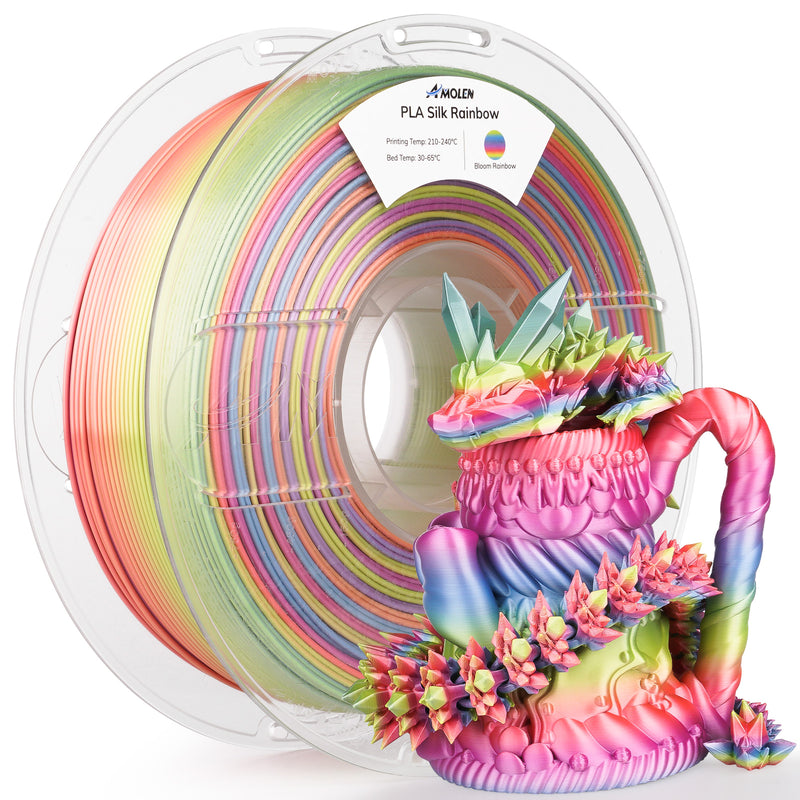Unlock the Secrets: Mastering Silk PLA Filament for Stunning 3D Prints!
In the world of 3D printing, filament choice can dramatically influence the final look and feel of your projects. Among the many options available, silk PLA filament stands out for its unique aesthetic appeal. This filament offers a striking glossy finish that can elevate your prints to an entirely new level, making them look more luxurious and vibrant. Whether you're creating intricate designs or simple models, silk PLA adds a touch of elegance that is hard to achieve with standard filaments. In this article, we will explore the best settings to optimize your silk PLA printing experience, ensuring that you can achieve stunning results with every print.

Understanding Silk PLA Filament
Silk PLA filament is a modified version of traditional PLA (Polylactic Acid) that incorporates additives to produce a shiny, silk-like finish. This filament is known for its ease of use, making it a favorite among both novice and experienced 3D printing enthusiasts. Unlike regular PLA, which has a matte finish, silk PLA reflects light beautifully, resulting in a more visually appealing outcome. It is ideal for decorative items, figurines, and prototypes where aesthetics are paramount. Additionally, silk PLA maintains the environmentally friendly attributes of standard PLA, as it is biodegradable and derived from renewable resources. Overall, silk PLA filament combines the best of both worlds: stunning visuals and eco-friendly properties, making it a popular choice for various projects.
Optimal Printer Settings for Silk PLA
To achieve the best results with silk PLA, it is crucial to fine-tune your printer settings. Start with the nozzle temperature, which should typically be set between 190°C and 220°C. A temperature range on the higher end can enhance the filament's glossy finish, but it’s essential to find the sweet spot for your specific printer. The bed temperature should be adjusted to around 50°C to 60°C, which helps with adhesion while preventing warping. These temperature settings are vital for producing smooth layers and ensuring that the filament flows correctly through the nozzle, resulting in that coveted shiny finish. Remember that different brands of silk PLA might behave slightly differently, so experimentation is encouraged to find the optimal settings for your setup.
Speed and Layer Height Adjustments
When printing with silk PLA, speed and layer height are two critical factors that can significantly impact the quality of your final product. A slower print speed, around 30 to 50 mm/s, allows for better layer adhesion and reduces the risk of stringing, which can detract from the filament's visual appeal. Additionally, a layer height of 0.1 to 0.2 mm is recommended for achieving a smooth finish. Thinner layers provide more detail and enhance the overall appearance of your prints, especially important for designs with intricate details. It’s important to note that while slower speeds and smaller layer heights improve the quality, they also increase print time, so balancing these factors is key.
Tuning Your 3D Printer for Best Results
Beyond temperature and speed, several other adjustments can help you get the most out of silk PLA. First, consider your extruder settings—ensure that the extrusion multiplier is correctly calibrated, as silk PLA can sometimes require slight adjustments to the flow rate. Retraction settings also play a crucial role; a retraction distance of 1 to 2 mm with a retraction speed of about 25 to 40 mm/s generally works well to minimize stringing. Additionally, cooling fan performance is essential for achieving a glossy finish. It’s advisable to use a moderate fan speed—around 50%—to cool the print adequately without causing warping. Taking the time to calibrate these settings will pay off in the quality of your prints.
Post-Processing Techniques
Once your prints are complete, you may want to enhance their appearance further through post-processing techniques. Sanding is a popular method to smooth out layer lines; start with a fine-grit sandpaper and gradually move to a finer grit for a polished finish. Polishing can also elevate the shine of silk PLA prints, and using a clear acrylic spray can provide an additional layer of gloss. Coating with a transparent resin is another option that not only enhances the finish but also adds durability to your prints. Exploring these post-processing techniques can help you achieve a professional look, making your creations truly stand out.
Maximizing Your Silk PLA Printing Potential
Mastering the settings for silk PLA filament can transform your 3D printing projects, allowing you to create stunning, high-quality prints that showcase the filament's unique aesthetic properties. By understanding the optimal temperature settings, adjusting print speed and layer height, tuning your printer, and employing effective post-processing techniques, you can unlock the full potential of silk PLA. Don't hesitate to experiment with different settings to discover what works best for your specific printer and project type. With a little practice, you'll be able to produce eye-catching prints that impress everyone who sees them.







